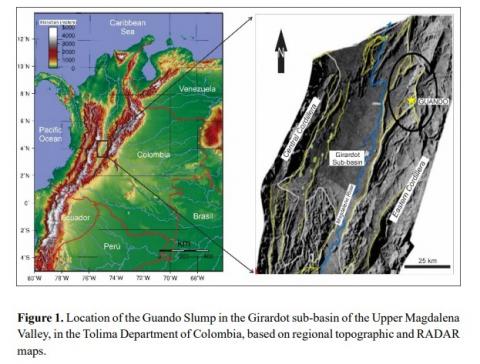Eduardo Antonio Rossello
2 025
AIMS Geosciences 2025, Volume 11, Issue 2: 370-386
A detailed geological study of the Guando oilfield has identified a modern landslide phenomenon that significantly alters the previous structural model and affects production challenges. The multi-compositional nature of the oil-bearing Cretaceous sequences of the Villeta Group, the rugged relief, the climatic incidence, and seismic activity in the Upper Magdalena Valley trigger the Guando Slump, which adjusts the topography to levels of greater stability. The previous tectonic model of the Guando oilfield was based on the superposition of an internally disturbed block by the Boquerón thrust. However, in its westernmost segment, this structure shows angular incompatibilities with the expected horizontal stress fields. Therefore, based on a detailed 3D interpretation of geological maps, DEM, and available geophysical data, we propose that this segment must be associated with the surface of the underlying detachment of the Guando Slump. The horizontal displacement of the landslide, ranging from 1 to 2 km, deforms and collapses the wells that reach the underlying productive reservoirs. This study describes the relationship of this new tectonic model of the Guando oilfield, considering the westernmost segment of the Boquerón thrust as a detachment of the Guando Slump. This real-life example, if properly monitored, will contribute to a better management of the possible causes and consequences of technical problems encountered in the Guando oilfield exploration and prevent catastrophic risks to the production facilities.

